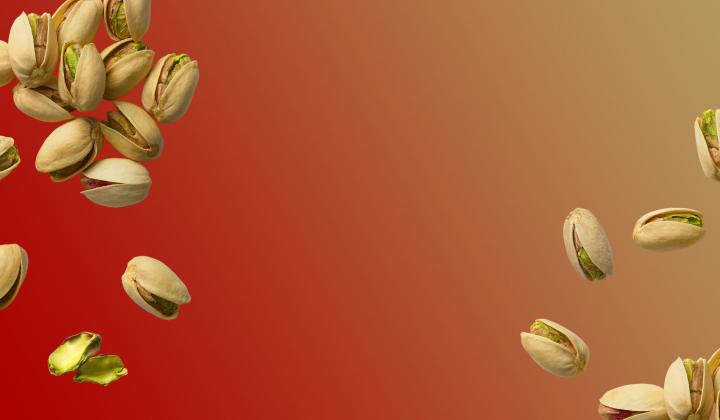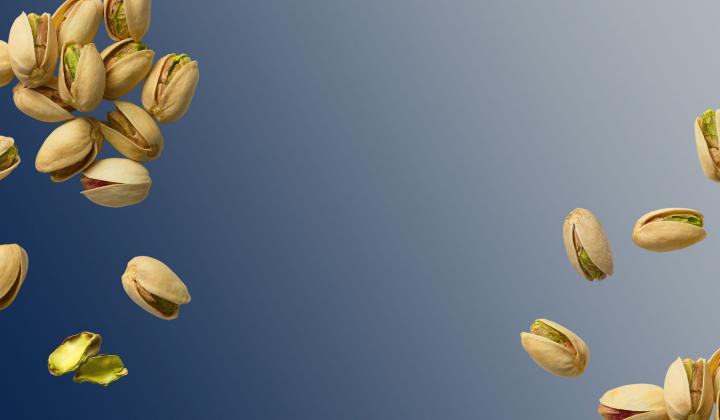Pistachio Are a Versatile Complete Protein
Sherene is an award-winning dietitian and chef focused on building a more sustainable world through plant-based nutrition education. She's collaborated with national brands and institutions to build innovative programs and serves as the Chair for the Academy of Nutrition and Dietetics, Vegetarian Practice Group.
PISTACHIOS: ALL 9 ESSENTIAL AMINO ACIDS
Roasted American pistachios joined soy, quinoa, and buckwheat to be classified as a complete protein source that provides all nine essential amino acids in adequate amounts for people 5 years and older. The terms “complete” and “incomplete,” as it pertains to protein, have been used to describe a variety of protein foods, specifically when referring to vegetarian, vegan and plant-based diets. With more people shifting to plant-centric diets, not only can pistachios serve as a versatile protein source as a snack throughout the day, but they also can serve as a great source of protein for meals.. According to the Food Industry Association’s 2019 U.S. Grocery Shopper Trends report, they found that at least one member of the household (33 percent) are following a plant-centric diet (vegetarian, vegan, flexitarian).1
Here are the top three questions dietitians hear from consumers about plant protein, and the scientific answers to back it up.
Will I be able to get enough protein on a plant-based diet?
According to the USDA Dietary Guidelines for Americans 2015-2020, the daily protein needs for healthy adults are 46 grams for women and 56 grams for men. In fact, most Americans tend to get too much protein, with over half exceeding their protein intake while failing to meet recommendations for protein variety,2 which means that people are relying on meat and poultry as their main sources; however, recommendations are focused on helping people shift to seafood, legumes, nuts and seeds. Note that the protein needs vary based on individuals and their unique factors, such as age, health and overall lifestyle factors. In the USDA Healthy Vegetarian Eating Pattern, recommendations for nuts and seeds have increased with the elimination of meat, poultry and seafood. Pistachios can fulfill that need with 1 ounce (28.35 g), which provides 6 grams of protein.3
Do I need to combine certain foods?
According to the Academy of Nutrition and Dietetics, it is well researched that eating a variety of plant foods, throughout the day, can supply all the essential amino acids without the need to combine foods in the same meal.4
Plant foods provide combinations of amino acids with foods that have limited amounts of certain essential amino acids. This has caused them to be classified as incomplete, with the exception of soy, quinoa, buckwheat among a few others classified as complete proteins. Most plant foods are limited in either lysine or methionine but can be fulfilled easily by eating protein-rich foods throughout the day. The new classification of pistachios as being a complete- protein food allows people who are following a plant-centric diet to have another go-to source of protein that does not require any planning or preparation.
How do pistachios fare on protein quality?
According to the Protein Digestibility Corrected Amino Acid Score (PDCAAS)5, pistachios provide adequate levels of all nine essential amino acids, at 81 percent of casein, which is used as a reference food. The Code of Federal Regulations (CFR) identifies alternative protein sources for the National School Lunch Program with the definition that “the biological quality of the protein in the alternate protein product must be at least 80 percent that of casein, determined by performing a Protein Digestibility Corrected Amino Acid Score (PDCAAS).”6 With the score of 81 percent, pistachios now can be utilized as a reliable alternative protein source as well as pistachios’ plethora of health benefits.












